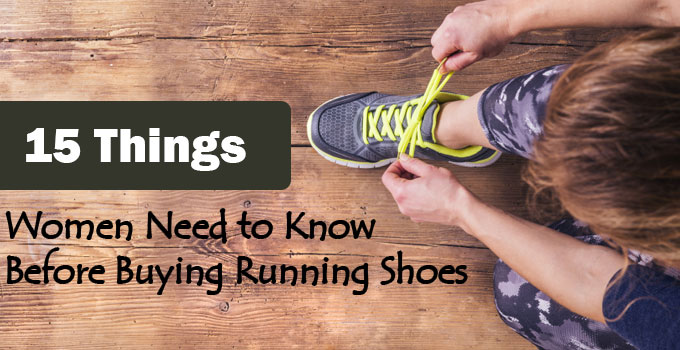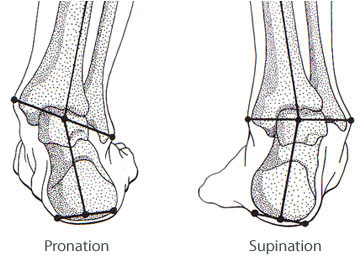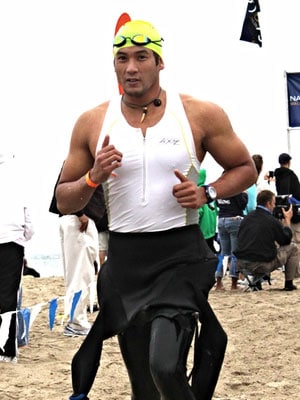
15 Things Women Need to Know Before Buying Running Shoes
July 2025 by couponlab
Until a few years ago, women’s running shoes were just scaled down versions of men’s running shoes. A popular phrase coined by manufacturers was, “Shrink ‘em and pink ‘em!” But with women’s numbers on the rise in competition running, companies like Asics, Nike and Saucony have finally clued in — women want shoes fit to compete! According to Running USA, in 2013, women were 57% of running event finishers, and the numbers are just going up. So let’s set you up for success! Here’s a few tips on how to find your perfect fit.
Table of Contents
WHY WOMEN NEED DIFFERENT RUNNING SHOES
1. Girl, you got hips…
The angle of incidence between your quad muscle and kneecap is called your Q-angle. Because your hips are likely wider than a man’s, you have a wider Q-angle, meaning your feet pronate to a greater extent (more on that later). That’s a mouthful, but it basically boils down to this: you need more cushion in your shoes!
2. Your feet are shaped differently
Anatomically, women’s feet are narrower in the heel and wider in the toes. This means you need better heel support and a lighter shoe. Usually, women’s shoes are made from entirely different materials than men’s, even if they’re the same brand.
3. Your body mass is lower to the ground
Women, on average, have less muscle mass than men, so our shoes are designed to sustain less impact when our feet hit the road. You might be thinking, “Yeah, but…does that mean I’m just buying a cheap-ass shoe that won’t last as long?” The answer is an emphatic “no.” Men’s shoes tend to be stiffer and are made with harder plastics. Because we have a lower body mass, we need a lighter shoe and a softer midsole that will flex. Get ready for some sore AF shin splints (among other maladies) if you ignore this key bit of information.
HOW DO YOU RUN?
Each individual’s running mechanics varies based on their gait and the rotation of their foot. It’s relatively easy to determine your mechanics — just look at the wear pattern on your current kicks. When you shop, you’ll want to find shoes that address your mechanics to prevent unnecessary injuries and pain.
4. Pronation

IMAGE VIA WWW.STRETCHCOACH.COM
Pronation refers to the natural, inward roll of your foot after your heel strikes the ground. If you’re a pronator, you’ll likely show wear on the ball of your foot and a small portion of the heel. Neutral pronation is a normal attribute and helps absorb shock and relieve joint pressure.
5. Overpronation
Overpronation is pretty common and occurs when the runner has a significantly high arch. If you’re an overpronator, you’ll see the wear on the inside edges of your shoes. Stability or motion control shoes can help compensate for your exaggerated foot roll.
6. Supination (aka under-pronation)
Finding runners who supinate is fairly uncommon, but those who do require lots of cushion and flexibility because of inadequate shock reduction. You’re a supinating runner if your wear shows on the outside edges of your shoes.
GET MORE BANG FOR YOUR BUCK
What’s your plan for your shoes?
Once you’ve picked out a shoe, what will you use it for? Are you planning on running trails or indoor tracks? Is it your goal to kick your long-distance workouts into gear? Or are you wanting a generic road-runner? These are all questions to ask before you put your plastic on the table. Different types of shoes will serve different purposes, and a shoe employed at the wrong job can wreak havoc and wear out fast.
7. The Roadrunner
Road-running shoes are made for hard, even surfaces like concrete and asphalt. They’re as all-purpose as you can get, offering comfort, flexibility and durability, and are a perfect starting point if you’re a beginner.
8. The Trailrunner
Trail-running shoes have an aggressive outsole that helps to maintain balance in mud, snow, rocks and other outdoor obstacles. While they offer support and stability, they are heavier and rigid. Not your regular racing shoe here.
9. Indoor/Cross-training Shoes
If you’re a frequenter of the gym, these are the shoes for you. They offer both in-line and lateral support, as the shoe builds around the ankle. They are designed to transition seamlessly from treadmill jogging to weight lifting. While these runners can tolerate the occasional 5k, they shouldn’t be employed for regular road-running or long distances.
YOUR GLASS SLIPPER

ERIC OLIVER | PHOTO VIA WWW.GOBEYONDEXERCISE.COM
Remember in Cinderella, where the prince is searching the kingdom high and low for the one lady who fits the tiny glass slipper? Yep. Sometimes finding a shoe that fits is just like that. Even when you know how and where you’ll be running, the arch of the shoe may be too high or the contouring unnatural.
Eric Oliver, Physical therapist and owner of Cincinnati-based Beyond Exercise, has a great tip on how to shop for good-fitting shoes: “It’s best to try shoes on in the afternoon so that you can be fitted when you have some swelling in your foot to accommodate for any swelling that may happen during your running.” Here are a few more pointers on what to look for when you shop.
10. The Heel
Your heel should fit securely but shouldn’t be too tight. Once you try the shoe on, lace it up to the top eyelet without tying it, and then slip your heel out; it should slip with ease. Then tie it. It shouldn’t come out easily.
11. The Feel

MEGAN KENNIHAN | PHOTO COURTESY OF MEGAN KENNIHAN
It’s hard to know how the shoe will perform by just standing on it. Test it out by jogging down a hallway or at an in-store treadmill. Just because you know your running mechanics or arch height doesn’t mean that’s all there is to it. The shoe and its arch should contour naturally with your movements. If you feel your arch cramping, put it back on the shelf!
According to running coach Meghan Kennihan, you should be willing to try on at least “three to four pairs of shoes in different brands” and “they must feel comfortable right away; you shouldn’t think you need to break them in.” She also cautions that beginners start with a shoe that has “at least a 4 millimeter drop (distance between your sole and the ground) to start” and not go straight to a zero drop or barefoot shoe, no matter how trendy. Don’t worry about the material, either, since “every shoe manufacturer uses breathable mesh and EVA foam in the soles, so you don’t have to worry about picking the right materials.”
12. The Flex
Like we talked about earlier, the flex of the shoe is vital to your running health and comfort. To check the flex point of the shoe, hold the heel and press the tip of the shoe into the floor. It should crease in the same place that your foot flexes.
13. The Instep
The upper part of the shoe should feel snug around your instep, but not tight or under pressure. If the shoe fits perfectly otherwise, try lacing it up a different way.
14. The Length
As women, sometimes we’re self-conscious about having large feet. To my fellow large-footed sisters, though: Don’t try to cram your foot in a smaller size! Your toes shouldn’t touch the end of the shoe and should be able to wiggle up and down. You want about a thumb’s width of room between your toes and the end of the shoe when you’re standing up.
15. The Width
Shoe manufacturers don’t collaborate for the most part on width, which makes it much more difficult to go up in width than in length. What’s more, the width is more about the total circumference of the ball of your foot than the actual measured distance across your foot. However, a sure sign that you need to find another shoe is if the eyelets of the shoe are far apart or if the shoe feels tight at the sides and top.
THE TAKEAWAY
You didn’t realize there is so much to know about picking the perfect shoe, did you!? Okay, maybe you did. Either way, don’t get overwhelmed. Specialty shoe companies offer shoe fittings and already know these basics to get you started. If you find that your foot is overpronated or supinated, and you’re having a hard time finding the right fit, remember that there’s aftermarket add-ons (like shoe inserts) to get the ball rolling (pun intended).
“Runners should change their shoes every 300 to 500 miles. If you see wrinkles in the side sole or have completely worn out the tread on the bottom sole, it is time to change shoes,” says Meghan Kennihan. She offers this tip to keep your current shoes from wearing out too quickly: “It’s a good idea to buy two pairs of shoes at a time and alternate them each day; that way you give [them] a break between workouts and they will last longer.”